1. Corning, New York
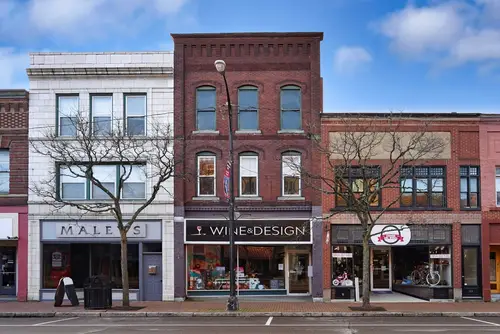
Corning built its reputation on glass—light bulbs, cookware, and even the glass for early space shuttles came from here. The Corning Glass Works employed generations of families and shaped the town’s identity. As large-scale manufacturing faded, Corning leaned hard into its legacy. The Corning Museum of Glass now brings in hundreds of thousands of visitors a year, showing off the art and science of what made the town famous.
The museum isn’t just a tourist spot—it’s the heart of the town’s rebirth. Locals lead glass-blowing demonstrations and work in galleries that once stored industrial molds. The factory floors may be quiet, but the furnaces burn for visitors instead of production. In a poetic twist, Corning’s glow never really went out—it just moved from the factory floor to the museum stage.
2. Lowell, Massachusetts
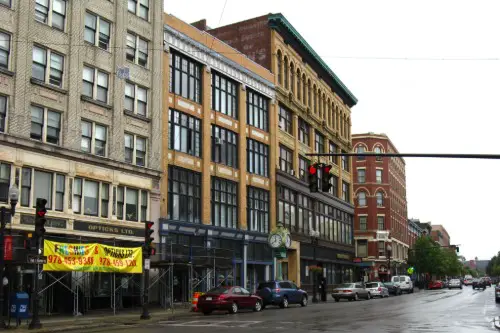
Lowell was once America’s textile capital, its mills powered by the Merrimack River and staffed by young women known as “mill girls.” The city’s factory whistle defined daily life, and its canal network was a marvel of early industrial design. The textile industry eventually collapsed, leaving behind miles of brick mill buildings. Today, the Lowell National Historical Park draws visitors to explore those same canals and restored factories, keeping the city’s story alive through tourism and education.
The park’s mill exhibits and boardinghouse tours preserve the rhythm of a vanished industrial age. Cafés and art studios now fill buildings that once rang with the sound of looms. Residents see this as a second act—one where creativity replaces machinery. Lowell hasn’t forgotten its roots; it’s just learned to turn them into its main attraction.
3. Schenectady, New York
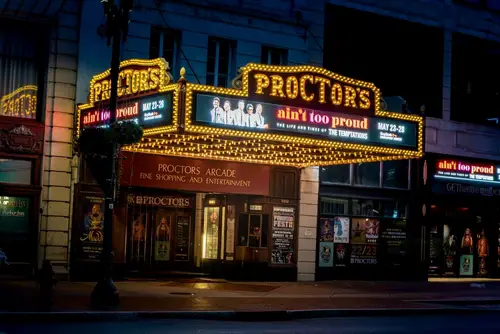
For decades, Schenectady was the proud home of General Electric and the American Locomotive Company. Its factories powered the world and kept the city thriving. But as heavy industry waned, the city’s energy dimmed too. Rather than let its past rust away, Schenectady began reviving old factories and honoring its industrial story.
Now, those same red-brick buildings host exhibits, theaters, and small businesses that celebrate the city’s heritage. Walking tours trace the rise and fall of the electric age that started here. Residents are fiercely nostalgic, proud of the fact that their grandparents literally helped power America. In Schenectady, history isn’t buried—it’s repurposed.
4. Jeannette, Pennsylvania

Jeannette was once called “the Glass City” for a reason—its factories produced millions of bottles and windows for the entire country. Smoke from glass furnaces was part of daily life, and nearly every family had someone in the trade. When the glass companies shut down, the town’s economy shattered too. But the memory of that era still sparkles in local museums and preservation projects.
Historic plaques mark the sites where furnaces once glowed, and residents still share stories of the craft. Community groups host exhibits about glassmaking and the workers who defined Jeannette’s identity. You can sense pride in how much the town once contributed to American industry. Even if the factories are gone, their legacy remains crystal clear.
5. Youngstown, Ohio
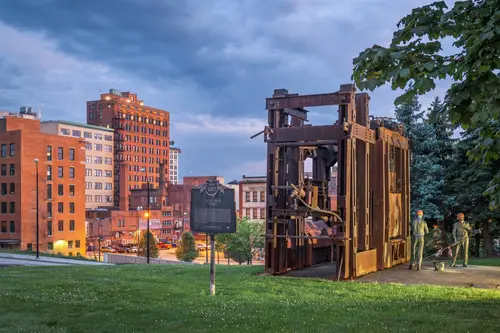
Youngstown was a steel giant, its skyline once lit by the fires of open-hearth furnaces. The city’s fate changed overnight in 1977 when mills abruptly closed on what became known as “Black Monday.” Unemployment soared, and so did the sense of loss. But over time, Youngstown found power in remembering its past rather than erasing it.
The city now celebrates its steel heritage with exhibits, art projects, and memorials honoring the workers who built it. Tours of historic sites and photo archives keep the memory of the mills alive. Locals often say Youngstown is still made of steel—just not the kind that comes from a furnace. It’s the kind that keeps a community standing long after the smoke clears.
6. Homestead, Pennsylvania
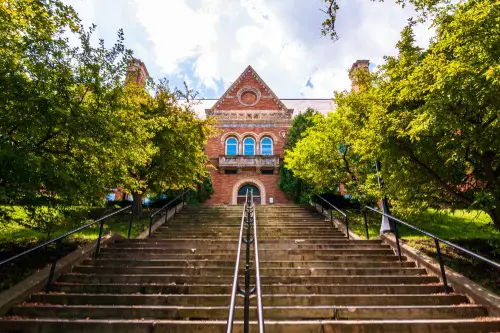
Homestead’s name is synonymous with steel—and with struggle. The town’s massive Carnegie mills and the violent labor strikes of the 1890s defined the American labor movement. Once the mills closed, the community faced decades of decline. Today, Homestead’s rebirth depends on its ability to tell that story to visitors.
The Carrie Blast Furnaces, once part of U.S. Steel, now operate as a museum and arts venue. Tour guides walk people through the skeletons of the mills, explaining what it meant to live and work in their shadow. Locals see it as sacred ground, not just old machinery. In Homestead, the ruins aren’t relics—they’re reminders.
7. Gary, Indiana
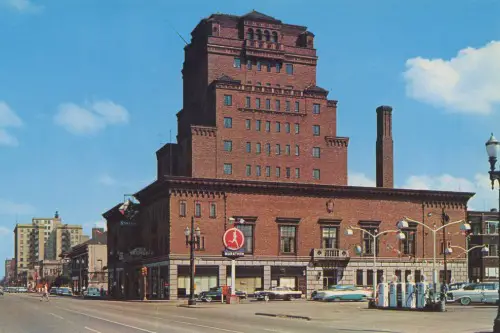
Built by U.S. Steel in 1906, Gary was one of America’s first great company towns. It thrived for decades as a model of industrial progress, drawing workers from around the world. When the steel market collapsed, so did Gary’s economy. Now, its survival depends as much on storytelling as on steel.
Community groups and local historians preserve Gary’s industrial roots through tours, archives, and cultural events. Visitors come to see the architecture of the steel era and the haunting remains of what was once America’s industrial pride. Residents talk about the past not as nostalgia, but as identity. The city’s strength now lies in how it remembers itself.
8. Paterson, New Jersey
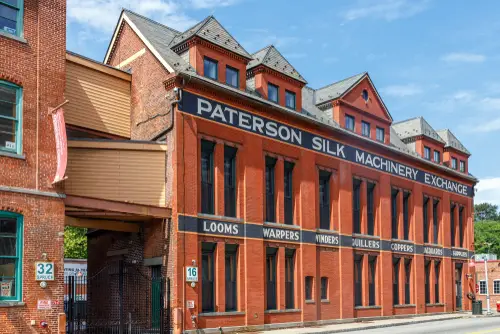
Paterson is literally called the “Birthplace of the American Industrial Revolution.” Its water-powered mills spun silk, wove textiles, and built locomotives that drove 19th-century growth. When the factories fell silent, the city turned to preserving what remained. The Great Falls Historic District now anchors a growing tourism trade built around that industrial heritage.
Visitors can walk the old mill raceways and learn how innovation shaped the city. Locals see pride in telling the story of immigrant labor and invention. Even amid urban challenges, Paterson celebrates its past as proof of what it once achieved. The machines may have stopped, but the legacy keeps running.
9. Hershey, Pennsylvania

Milton Hershey didn’t just make chocolate—he built a town around it. Workers lived in tidy homes, shopped in company stores, and sent their kids to company schools. Today, Hershey’s factories have shrunk, but the sweet legacy hasn’t. Tourism, museums, and the famous amusement park keep the story alive.
The Hershey Story Museum shares how one man’s industrial dream became an entire community. Visitors tour exhibits about the chocolate-making process and the utopian ideals behind the town’s design. Locals take pride in being part of what’s now a living brand. In Hershey, nostalgia is big business—and it still tastes good.
10. Kohler, Wisconsin

Kohler began as a company town for workers making porcelain and plumbing fixtures. Its founder wanted a place where craftsmanship and quality of life went hand in hand. While manufacturing continues, the town’s charm now comes from celebrating that carefully planned industrial heritage. Museums, design tours, and historic homes show off what factory life once looked like when it was done right.
The American Club, once worker housing, is now a luxury resort filled with industrial history. Visitors walk the same streets built for the original craftsmen. Locals see the balance between progress and preservation as part of Kohler’s DNA. It’s a rare factory town where nostalgia feels almost intentional.
11. Manchester, New Hampshire

Manchester’s textile mills once made it the pride of New England industry. The Amoskeag Manufacturing Company was one of the largest textile producers in the world. When it shut down, the loss rippled through the city for decades. But Manchester refused to tear its history down—it repurposed it.
The old mill yards now house museums, universities, and tech startups. Visitors can still see the original canal system that powered the looms. Locals joke that the city still produces ideas even if it doesn’t produce cloth. In Manchester, progress is literally built on the foundations of the past.
12. Lawrence, Massachusetts

Lawrence’s sprawling mills once powered the textile industry and drew immigrant workers from around the world. The “Bread and Roses” labor strike of 1912 made national headlines and became part of the town’s identity. When manufacturing left, Lawrence kept that working-class pride alive. Today, it celebrates its history through museums and cultural festivals that honor its industrial roots.
Restored mill complexes now house apartments, art studios, and small museums. Locals cherish the architecture as proof of their endurance. The city’s skyline still tells the story of the workers who built it brick by brick. Lawrence isn’t rich in industry anymore—but it’s rich in history.
13. Holyoke, Massachusetts
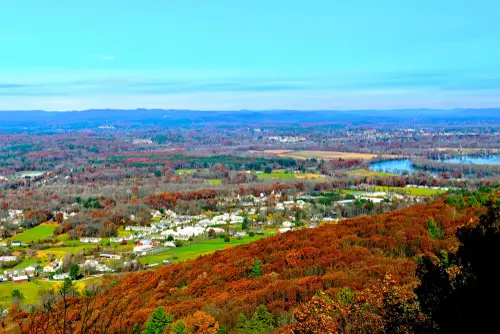
Holyoke was once known as the “Paper City” for its dozens of mills that churned out everything from fine stationery to newsprint. The city’s network of canals powered factories that ran day and night. When the paper industry collapsed, Holyoke reinvented itself by embracing its heritage. Museums and historic districts now celebrate the ingenuity that once made it thrive.
Canal walks and factory tours bring visitors face to face with the city’s industrial remains. Artists and small businesses have moved into restored mill spaces. Locals call it “creative reuse,” turning old machines into new beginnings. Holyoke’s paper story may be finished, but the imprint remains.
14. Pittsfield, Massachusetts

Pittsfield thrived on textiles and later on General Electric’s defense and electrical manufacturing. When GE downsized, it left a void that reshaped the city’s future. Pittsfield has since leaned on its industrial past to define its cultural revival. Museums, historic sites, and renovated mills tell the story of a place that refused to disappear.
The Berkshire Museum and local archives highlight the ingenuity that once powered the town. Old mill buildings now serve as studios and theaters. Residents take pride in the grit that kept Pittsfield alive through multiple reinventions. Its past isn’t a burden—it’s a blueprint.
15. North Adams, Massachusetts

Once a center of electrical component manufacturing, North Adams nearly emptied out when its factories closed. Instead of demolishing its massive mill buildings, the town turned one into a destination. MASS MoCA, one of the largest contemporary art museums in the U.S., now fills the old Sprague Electric complex. What was once industry now hums with creativity and tourists.
The transformation changed the town’s identity completely. Locals who once built electronics now host artists and visitors from around the world. The museum drives the local economy, proving that reinvention can succeed where industry failed. North Adams turned its factory floors into cultural foundations—and it works.
This post 15 Once-Booming Factory Towns Now Living Off Their Museums was first published on American Charm.


